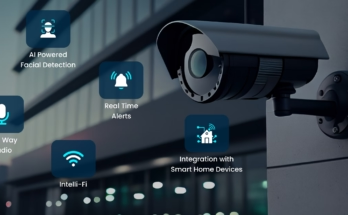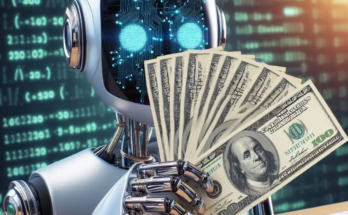Introduction
Agriculture has always been a high-risk industry, with farmers constantly battling unpredictable weather, pests, diseases, and fluctuating market prices. But what if we told you that technology could help mitigate these risks in real time? Enter the integration of the Internet of Things (IoT) and Artificial Intelligence (AI) in agricultural risk management. These cutting-edge technologies are revolutionizing farming by providing real-time insights, predictive analytics, and automated solutions. Let’s dive into how IoT and AI are shaping the future of agriculture.
Understanding IoT and AI in Agriculture
What is IoT in Agriculture?
The Internet of Things (IoT) in agriculture refers to the use of interconnected devices, sensors, and networks that collect and transmit data to improve farming efficiency. These devices help monitor soil conditions, weather patterns, livestock health, and more.
How AI Complements IoT in Farming
Artificial Intelligence (AI) enhances IoT by analyzing the collected data and making intelligent predictions. AI-powered systems can detect patterns, optimize resource usage, and automate decision-making, ultimately improving productivity and reducing risks.
The Role of IoT and AI in Risk Management
1. Real-Time Weather Monitoring and Prediction
Farmers are at the mercy of the weather. IoT sensors collect data on temperature, humidity, rainfall, and wind speed, while AI algorithms analyze this information to predict upcoming weather conditions. This allows farmers to make informed decisions and take precautionary measures.
2. Precision Agriculture: Optimizing Resource Use
IoT-enabled precision agriculture ensures that water, fertilizers, and pesticides are used efficiently. AI analyzes soil moisture levels, nutrient content, and crop health, optimizing irrigation and fertilization schedules to reduce waste and increase yield.
3. Pest and Disease Detection
IoT sensors and AI-powered image recognition can detect early signs of pest infestations and plant diseases. AI-driven models analyze images of crops, identifying anomalies before they become widespread, allowing farmers to act quickly and prevent losses.
4. Livestock Monitoring and Management
Smart collars and sensors attached to livestock track their health, movement, and feeding patterns. AI algorithms analyze this data, alerting farmers to potential health issues before they escalate, reducing mortality rates and improving livestock welfare.
5. Smart Irrigation Systems
Water scarcity is a major challenge in agriculture. IoT-enabled irrigation systems adjust water usage based on real-time soil moisture levels and weather forecasts. AI optimizes watering schedules, ensuring crops get the right amount of water without wastage.
6. Predictive Maintenance for Agricultural Equipment
Farming machinery is expensive, and unexpected breakdowns can be disastrous. IoT sensors monitor equipment performance, while AI predicts potential failures, enabling preventive maintenance and reducing downtime.
7. Supply Chain Optimization
From farm to market, IoT and AI enhance supply chain efficiency. Smart sensors track product conditions during transportation, ensuring freshness and reducing post-harvest losses. AI-driven analytics help farmers make informed decisions about storage and distribution.
How IoT and AI Reduce Financial Risks
8. Smart Insurance Solutions
AI-driven risk assessment models help insurers provide customized policies to farmers. IoT data ensures fair claim settlements based on real-time damage assessments, reducing financial losses for both farmers and insurers.
9. Market Price Predictions
Fluctuating market prices can lead to significant losses. AI analyzes market trends, consumer demand, and economic indicators to predict price movements, helping farmers make strategic selling decisions.
10. Fraud Detection in Agricultural Transactions
AI algorithms detect anomalies in transactions, preventing fraud and ensuring transparency in financial dealings between farmers, suppliers, and buyers.
The Future of IoT and AI in Agriculture
11. Autonomous Farming
AI-powered drones and robotic systems are paving the way for autonomous farming. These machines can plant seeds, apply fertilizers, and monitor crop health without human intervention, increasing efficiency and reducing labor costs.
12. Blockchain Integration for Data Security
Combining blockchain with IoT and AI enhances data security and transparency in agricultural transactions. Farmers can track their produce from field to consumer, ensuring authenticity and fair pricing.
13. Climate Change Adaptation
AI models analyze historical weather data and predict climate change impacts, helping farmers adapt their practices to ensure sustainability and resilience.
14. Government and Policy Support
Governments worldwide are recognizing the importance of smart farming. Policy initiatives and subsidies for IoT and AI adoption in agriculture are expected to drive widespread implementation.
15. Challenges and Barriers to Adoption
Despite its potential, IoT and AI integration in agriculture face challenges such as high initial costs, data privacy concerns, and lack of technical expertise among farmers. Addressing these barriers is crucial for widespread adoption.
Conclusion
IoT and AI are transforming agriculture, providing farmers with real-time risk management solutions that improve productivity, efficiency, and profitability. By leveraging smart technology, farmers can mitigate unpredictable risks, optimize resource use, and secure their livelihoods. As technology continues to advance, the future of farming looks more promising than ever.
FAQs
1. How does AI help farmers predict crop diseases?
AI uses image recognition and machine learning algorithms to analyze crop health, identifying early signs of diseases and allowing for timely intervention.
2. What are the benefits of IoT-based smart irrigation systems?
IoT-enabled irrigation systems optimize water usage based on real-time soil and weather data, reducing waste and ensuring crops receive adequate hydration.
3. Is AI in agriculture affordable for small-scale farmers?
While initial costs can be high, governments and agricultural organizations are introducing subsidies and affordable solutions to encourage small-scale farmers to adopt AI-driven technology.
4. How does IoT improve livestock management?
IoT sensors track livestock health, movement, and feeding patterns, helping farmers detect health issues early and improve overall animal welfare.
5. What are the biggest challenges in adopting IoT and AI in agriculture?
The main challenges include high implementation costs, data privacy concerns, and the need for farmer training to effectively use these technologies.
Meta Description: Discover how IoT and AI integration is revolutionizing real-time agricultural risk management. Learn about predictive analytics, smart farming, and the future of AI-driven agriculture.

